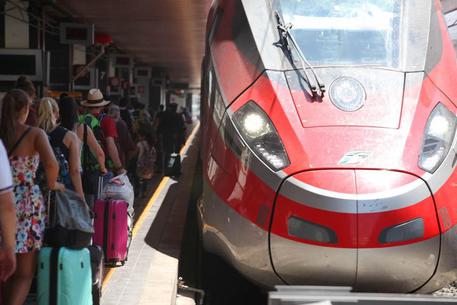(ANSA) - Rome, February 7 - Works to build a high-speed rail line in Italy have unearthed an archaeological treasure dating back to the Copper Age. Excavations for the new lines, said the Italferr engineering company of the Ferrovie dello Stato group, have brought to light millions of archaeological finds that have begun to be valorised and showcased in museums through various superintendents' offices. "We were the first, in 1996, to bring in archaeological staff and a specific structure. For 2017 alone, some 10.5 million euros were put into excavation activities," Italferr managing director Carlo Carganico said. A team of eight highly specialized archaeologists are tasked with preventative investigations from the initial planning stages for the new works onwards, with two aims: to avoid an increase in costs and to protect the finds until they are restored and given back to the community. One example is the painted tomb from the sixth century BC, which will be exhibited in the Maddaloni museum near Caserta and the 2,500 restored finds discovered along the Cervaro-Bovino and Napoli-Bari lines, some of which will be showcased at the Manfredonia museum near Foggia. For the most part, these finds are vases and jewelry from the sixth to the fourth century BC, though there are some that stand out from the Copper Age in the fourth century BC. "Preventative archaeology is an asset that has been part of this company for over 20 years, and is one of our qualifying features in Italy and the world, both now and for the future," Carganico stressed. "Our modus operandi leads to halved costs and a 40% reduction in the time needed for the works. It also makes it possible to preserve invaluable archaeological heritage in which the country's identity and legacy lie."
Railway works unearth Copper Age archaeological treasure
'Millions of finds' to be restored and exhibited, Italferr
